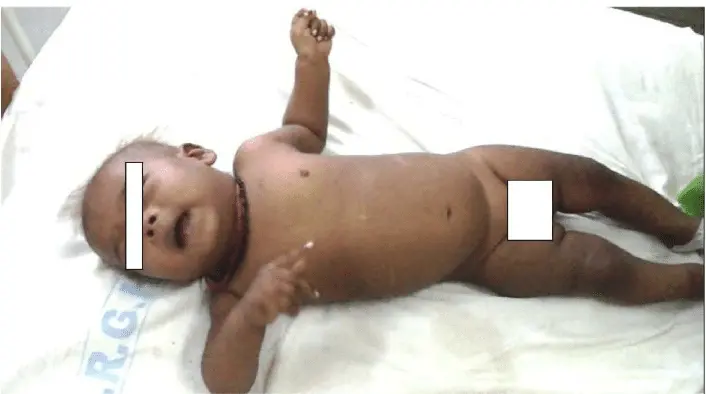- Home
- Medical news & Guidelines
- Anesthesiology
- Cardiology and CTVS
- Critical Care
- Dentistry
- Dermatology
- Diabetes and Endocrinology
- ENT
- Gastroenterology
- Medicine
- Nephrology
- Neurology
- Obstretics-Gynaecology
- Oncology
- Ophthalmology
- Orthopaedics
- Pediatrics-Neonatology
- Psychiatry
- Pulmonology
- Radiology
- Surgery
- Urology
- Laboratory Medicine
- Diet
- Nursing
- Paramedical
- Physiotherapy
- Health news
- Fact Check
- Bone Health Fact Check
- Brain Health Fact Check
- Cancer Related Fact Check
- Child Care Fact Check
- Dental and oral health fact check
- Diabetes and metabolic health fact check
- Diet and Nutrition Fact Check
- Eye and ENT Care Fact Check
- Fitness fact check
- Gut health fact check
- Heart health fact check
- Kidney health fact check
- Medical education fact check
- Men's health fact check
- Respiratory fact check
- Skin and hair care fact check
- Vaccine and Immunization fact check
- Women's health fact check
- AYUSH
- State News
- Andaman and Nicobar Islands
- Andhra Pradesh
- Arunachal Pradesh
- Assam
- Bihar
- Chandigarh
- Chattisgarh
- Dadra and Nagar Haveli
- Daman and Diu
- Delhi
- Goa
- Gujarat
- Haryana
- Himachal Pradesh
- Jammu & Kashmir
- Jharkhand
- Karnataka
- Kerala
- Ladakh
- Lakshadweep
- Madhya Pradesh
- Maharashtra
- Manipur
- Meghalaya
- Mizoram
- Nagaland
- Odisha
- Puducherry
- Punjab
- Rajasthan
- Sikkim
- Tamil Nadu
- Telangana
- Tripura
- Uttar Pradesh
- Uttrakhand
- West Bengal
- Medical Education
- Industry
Propranolol benefits infantile tremor syndrome after initiating vitamin B12 therapy: Case Study

Propranolol is beneficial for the treatment of infantile tremor syndrome (ITS) in the context of vitamin B12 deficiency, according to a recent case study published in the Frontiers in Pediatrics.
Children with vitamin B12 deficiency can present with anaemia, pancytopenia, failure to thrive, hypotonia and developmental delays and/or regression. Vitamin B12 deficiency can be seen in infants who are exclusively breastfed by mothers who are vegetarian or who are themselves vitamin B12 deficient. Investigations in children with vitamin B12 deficiency can reveal macrocytic anaemia, leukopenia, thrombocytopenia, high serum homocysteine levels and high lactate dehydrogenase (LDH) levels. Peripheral blood smears may show macrocytic hypochromic oval erythrocytes, anisocytosis, poikilocytosis, and hyper-segmentation of neutrophils. Furthermore, head imaging may reveal cerebral atrophy and delayed myelination patterns for age. Early recognition and treatment of vitamin B12 deficiency can lead to significant improvement in terms of neurodevelopment and prevent long term neurological consequence
A previously healthy 13-month-old girl was referred to a tertiary pediatric care centre for further investigations and management of her pancytopenia. She was initially seen by a general paediatrician in the community for concerns of a 2-month history of tiredness, decreased appetite and failure to thrive. Further investigations revealed that her anaemia was macrocytic: her MCV was 107.4 fL (range 79–97 fL). She was diagnosed with infantile tremor syndrome (ITS), which was likely triggered by her vitamin B12 treatment, as described in the literature. She also had undetectable vitamin B12 levels (<100 pg/mL, normal range 160–950 pg/mL), as well as high lactate dehydrogenase (LDH) levels (>4,300 U/L, normal range 373–618 U/L). Her reticulocyte count was also inappropriately within the normal range (61 × 103/μL, normal range 19–73 × 103/μL) given her significant anaemia. Her other nutrients including iron and folic acid were within normal range. Immunoglobulin levels were not measured.
She was closely followed by general paediatrics, haematology and neurology as an outpatient. She continued to show dramatic improvements in terms of neurodevelopment: within a month, she was sitting unsupported, was able to stand with minimal support and started to crawl. Her oral intake also increased significantly, and she was transitioned off of nasogastric tubes 4 months after her admission. Given the significant improvement in her tremors, she was weaned off of the propranolol after 6 weeks of treatment without any rebound in her symptoms.
Thus, this case highlights the efficacy and safety of propranolol for the treatment of ITS in the context of vitamin B12 deficiency. From a parental perspective, addressing these tremors provided reassurance and allowed their daughter to progress in terms of developmental skills. However, it is a limited report with only one case. Further studies are needed to identify the optimal treatment protocol for tremors associated with infantile tremor syndrome and vitamin B12 deficiency.
Reference:
Case Report: Propranolol Therapy for Infantile Tremor Syndrome in a Child With Vitamin B12 Deficiency by Amélie Cyr et al. published in the Frontiers in Pediatrics.
Front. Pediatr., 24 November 2021 | https://doi.org/10.3389/fped.2021.774747
Dr. Shravani Dali has completed her BDS from Pravara institute of medical sciences, loni. Following which she extensively worked in the healthcare sector for 2+ years. She has been actively involved in writing blogs in field of health and wellness. Currently she is pursuing her Masters of public health-health administration from Tata institute of social sciences. She can be contacted at editorial@medicaldialogues.in.
Dr Kamal Kant Kohli-MBBS, DTCD- a chest specialist with more than 30 years of practice and a flair for writing clinical articles, Dr Kamal Kant Kohli joined Medical Dialogues as a Chief Editor of Medical News. Besides writing articles, as an editor, he proofreads and verifies all the medical content published on Medical Dialogues including those coming from journals, studies,medical conferences,guidelines etc. Email: drkohli@medicaldialogues.in. Contact no. 011-43720751


